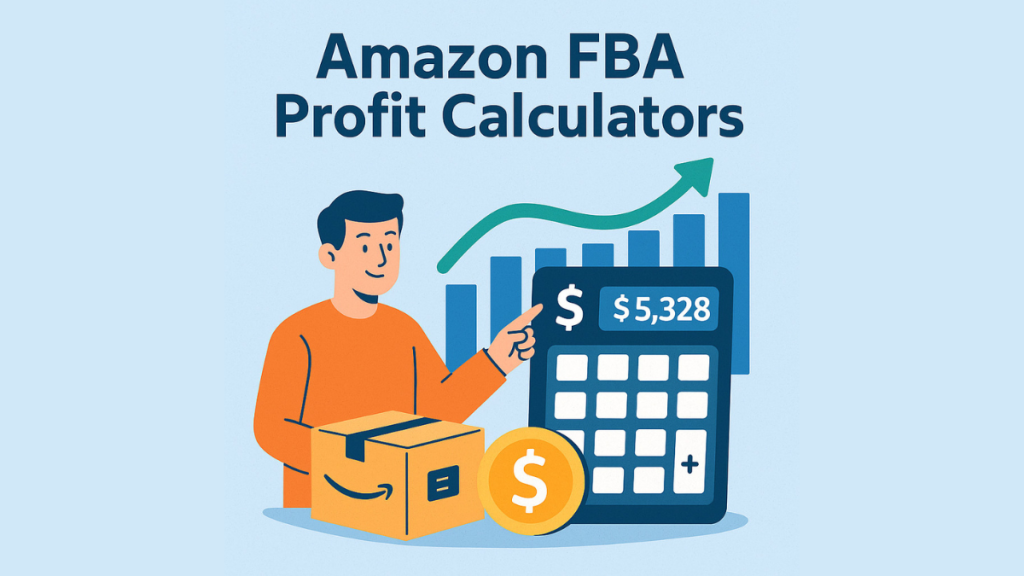If you’re selling on Amazon, you’re likely already familiar with how complex pricing and profit calculations can get. Between FBA fees, referral commissions, storage charges, and shipping costs, figuring out your true profit margin isn’t always straightforward. That’s where Amazon FBA profit calculators come in.
But how accurate are they really? Can you trust the numbers they give you to make pricing and sourcing decisions?
This guide breaks down the accuracy of Amazon FBA profit calculator, the variables they depend on, and how to make the most of them in your selling strategy.
What Is an Amazon FBA Profit Calculator?
An Amazon FBA profit calculator is a digital tool designed to estimate the profit you can expect from selling a product using Fulfillment by Amazon (FBA). These calculators usually allow you to input:
- Product selling price
- Product cost
- Shipping fees
- Amazon FBA fees
- Referral fees
- Storage fees
Based on this data, the calculator estimates your net profit and margin per unit. There are many free and paid tools available—some created by Amazon itself, others by third-party software providers.
How Do FBA Profit Calculators Work?
FBA profit calculators pull data from Amazon’s fee structure and combine it with the numbers you provide to deliver an estimated profit. Most calculators use Amazon’s most recent fee data, which is crucial for getting a close-to-accurate result.
However, it’s important to understand that these calculators only work as well as the data you feed them. Garbage in, garbage out.
Factors That Influence Accuracy
While FBA calculators can be incredibly helpful, their accuracy depends on several variables:
1. Up-to-Date Fee Data
Amazon regularly updates its FBA fee structure. If a calculator doesn’t use current data, your profit estimate may be off by a significant margin.
2. Product Dimensions and Weight
FBA fees are heavily influenced by the size and weight of your product. Misreporting this can lead to completely inaccurate projections.
3. Accurate Cost of Goods Sold (COGS)
Many sellers forget to include hidden costs like packaging, prep services, or supplier transaction fees. If you input an overly optimistic product cost, your margins will look better than they are.
4. Storage Fees Based on Season
Amazon charges higher storage fees during Q4. A calculator that doesn’t factor in seasonal changes might show misleading results for long-term inventory.
Common Pitfalls to Avoid
Even the most advanced profit calculator can’t save you from bad data or oversight. Here are common mistakes that reduce calculator accuracy:
- Ignoring returns and refunds
- Forgetting to include prep center costs
- Assuming shipping fees are flat
- Using old fee data
- Not adjusting for promotions or discounts
Why Accuracy Matters for Your Business
Inaccurate profit calculations can lead to a cascade of bad business decisions. You might:
- Overprice and lose sales
- Underprice and lose money
- Source unprofitable products
- Miscalculate inventory turnover
Getting your numbers right is essential for running a sustainable Amazon business.
Streamline Your Operations with AMZ Prep
Working with a fulfillment partner like AMZ Prep goes beyond just estimating profits—it helps align your business with real-world operational costs. As a leading 3PL for ecommerce, AMZ Prep provides end-to-end Amazon FBA prep and fulfillment services that streamline key processes such as packaging, labeling, and inventory handling. Their services are designed to reduce logistical complexities, improve turnaround times, and maintain cost efficiency.
By partnering with a dedicated 3PL, sellers can gain greater control over their fulfillment pipeline, minimize overhead, and focus more on growth and strategy.
Best Practices for Getting the Most Accurate Results
If you’re using a profit calculator, here’s how to ensure your numbers are reliable:
1. Double-Check Amazon Fees
Use Amazon’s official FBA Revenue Calculator for baseline accuracy. Then compare results with trusted third-party tools for cross-verification.
2. Use Real Product Data
Enter actual product weight, dimensions, and shipping info. Don’t rely on estimates from your supplier or guesses from similar listings.
3. Incorporate All Costs
Include not just the product cost, but:
- Customs/duties
- Prep service charges
- Shipping (both inbound and outbound)
- Returns and replacements
- Amazon advertising (if applicable)
4. Run Scenarios
Use different pricing and fee scenarios to understand your risk range. What happens if Amazon increases storage fees? Or if your return rate spikes?
Beyond the Calculator
FBA profit calculators offer a solid starting point, but they aren’t the full picture. They can’t account for changing Amazon fees, seasonal storage costs, return rates, or unexpected supply chain issues. Relying solely on automation can lead to blind spots.
To get the most out of your data, pair calculator insights with your actual sales performance, competitor pricing, and regular financial reviews. Use them to validate your decisions—not to replace critical thinking. For long-term growth, it’s essential to go beyond the numbers and factor in strategy, trends, and real-world conditions.
Final Thoughts: Treat Calculators as a Starting Point
Amazon FBA profit calculators are valuable for estimating margins, but they shouldn’t be your only resource. Their accuracy hinges on the quality of the information you provide and your awareness of all associated costs. Make it a habit to review and update your data regularly to reflect real-time changes in fees and operations.
Keep in mind—tools alone won’t drive success. Combining accurate calculations with expert support can make all the difference. Working with a fulfillment provider like AMZ Prep adds clarity and structure to your operations, allowing you to shift focus from manual number crunching to strategic growth.

